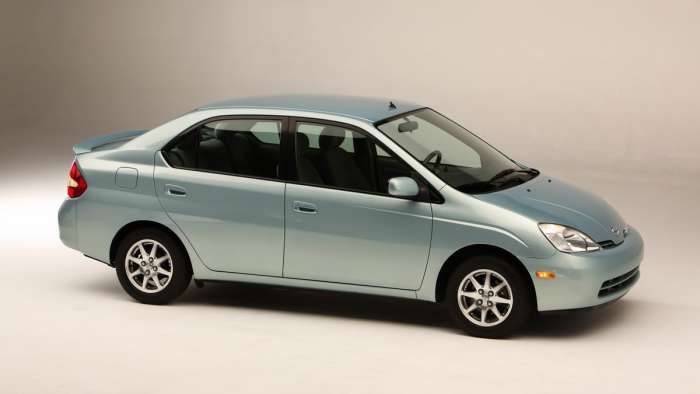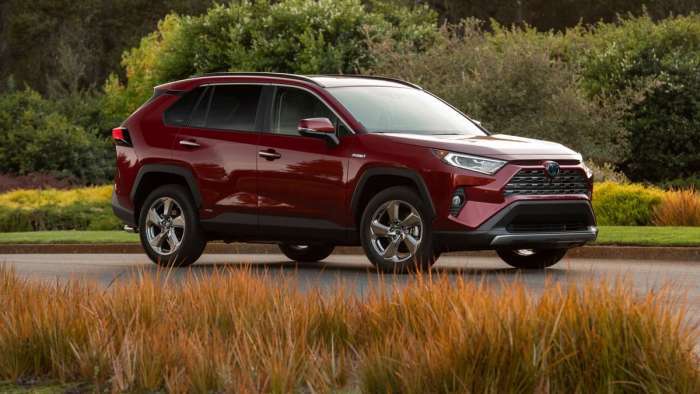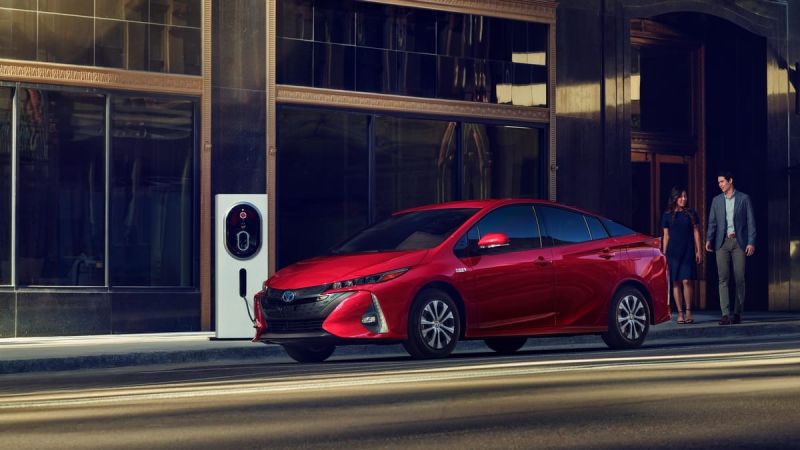The Toyota Prius has been one of the most influential cars ever made in the automotive industry. It created a market where there was not one and then dominated it.
Toyota has always been a leader in hybrid technology. Pushing more of their line-up into hybrids has positioned Toyota in a way that shows the world what technology they believe is right.
My question is this. If Toyota is so advanced with hybrid technology, why do cars like the Prius Prime, their plug in version, only have 25 miles of EV driving range? I want to explore what Toyota is doing to once again achieve world domination in its respective market.
Why The Prius Prime Has 25 Miles Of Range
Back in 2010, Chevrolet made a car called the Volt. It had 38 miles of EV only range with a backup gas engine that could extend it out to 380 miles. Not bad for 2010 technology. Now fast forward to 2020 and the Toyota Prius Prime, 25 miles of EV only range, and a backup hybrid system to extend it.

So, in 10 years, we have gone backward in terms of EV range for plug-in vehicles? Something about that does not sit right with me. Knowing Toyota as I do, I came up with a couple of theories on why this could be.
Theory one: Toyota did the research and found that most EV drivers only need 25 miles of range for the driving they do. Toyota is a company that bases decisions on collected data (well, most companies do). Toyota, as a car company, does a couple of things very well. They know what people are most likely to buy and what they will spend. In other words, they know their customer.

Toyota spends loads of time figuring out what the best combination of car price to benefit ratio their buyers are wanting. Once they have collected the data, Toyota sets out to create a car the suits the needs of a market they believe will be profitable for their bottom line. Think of it this way, it has to be cost-effective for them to produce it, and it also has to have a significant enough demand for them to sell it. This reason is why Toyota is a great company and does very well financially.
Theory two: Toyota has not found a battery; they fully trust yet. Remember nickel-metal hydride? It is still found in Prius and Rav4 hybrids to this day. If it is such a problematic technology, why does Toyota keep using it? Because they know it. They have data to support the lifespan of NiMH and how the customers will react to it.

Toyota has kept NiMH around because it has proven to them to be good enough to keep around. It is predictable and robust. Lithium-Ion, however, has been a completely different animal. The volatility of the technology has kept Toyota at a safe distance, using it sparingly until it could be understood further.
Toyota is not a company that always dives in and takes enormous risks. Building Prius was undoubtedly one of those risks, but I am confident it was a very calculated one. Toyota does not do anything unless they know they have minimal risk. I believe that this is one reason they are only allowing Prius Prime to have 25 miles of range.
Toyota is still verifying the validity of how good Li-ion is. With how quickly battery technology is changing, Toyota may be limiting the use of Li-ion until they know for sure where the future of battery-powered cars will take them.
<strong>Conclusion
Toyota is a great company, and they build amazing machines. While these are my theories on the Prius Prime and the 25 miles of range, I am sure there is something I have missed here. I wholeheartedly believe that Toyota is working to find what car can bring them another 20 years of prosperity.
The 25 miles of range in the Prius Prime is a calculated risk Toyota has been willing to take, make no mistake about it. It may not be the car for you, but for some people it is, and Toyota will take that to the bank. I think that we will see increased range as soon as Toyota can prove they have found a reliable battery technology that is worthy of their time.
Thank you for reading. I look forward to seeing you in the next story. Why The Toyota Prius 12v Auxiliary Battery Costs So Much.
Watch this Toyota Prius truck with a nice little bed and click to subscribe to Torque News Youtube for daily automotive news analysis.
Peter Neilson is an automotive consultant specializing in electric cars and hybrid battery technologies. He holds a Bachelor of Science in Automotive Service Technology from Weber State University. Peter is also an Instructor of Automotive Technology at Columbia Basin College. Peter can be reached on Linkedin and you can tweet him at The_hybrid_guy on Twitter. Find his page on Facebook at Certified Auto Consulting. Read more of Peter's stories at Toyota news coverage on Torque News. Search Toyota Prius Torque News for more in depth Prius coverage from our reporters.












Comments
One thing to not is that the
Permalink
One thing to not is that the Prime is a car that Toyota needs to satisfy California's ZEV mandate and that Toyota is really only aggressively selling the Prime in the state of California and other states that follow California emissions regulations.
Toyota might well be doing the bare minimum to meet those requirements.
The RAV4 Prime will have a much larger battery and hopefully be a less compromised vehicle than the Prime is . The battery in the load bay really reduces the usability of the Prime (I own one.)
There are several mistakes
Permalink
There are several mistakes here. Notably, the 2010 Prius only had 35 miles of range, not 38. Plus, the picture shown is of a gen-2 Volt which has 53 miles of range.
The most likely reason the Prius Prime has 25 miles boils down to cost. They wanted to use the same modules that the regular Prius Eco had, only the Prime has 5 modules instead of 2. They could have technically fit more cells and better used the space in the back of the Prime, but it would have cost more money to engineer it and to manufacture it. Not only because of the extra cells, but because the shape of the pack would no longer be a simple box, but rather an oddball shape.
The big problem with the Volt was cost. It was never profitable for GM. But Toyota has designed the Prime to be able to sell at a profit. That's very important.
But that begs the question, why aren't they selling more of the Prime than they are? There is plenty of demand and many parts of the USA have no stock available. This is where I give credit and agreement with the article that Toyota is holding back because they are wanting to validate the technology. Prius Prime drivers are essentially beta-testers for Toyota to see how the batteries hold up being charged and discharged every day. If Toyota is satisfied with the result, I expect to see more range in future versions as the design is refined. The Rav-4 Prime is a good example as it will have 39 miles of range.